This review started out different. One of my good friends told me that she likes the SsangYong Tivoli simply because she can cross her legs while on the front passenger seat. Of course, she had to push the seat back but she claims that even if she does so, there’s ample legroom at the back for the average Filipino, meaning people 5’4 to 5’6. I was surprised by the statement because when I’m in front and not driving, it never crossed my mind to do a “de-kwatro.” She got me curious though so I asked a friend from SsangYong Philippines to see this for myself.
Late last year, they reintroduced the gas variant that has entry-level pricing but mid-level features. I thought I should get that in order to answer this cross-legs dilemma I found myself in. So I did and here’s what I think about it.
Distinct Style
The Tivoli has a distinct styling that cannot be defined by current norms. It’s not sleek, nor muscular, or rugged. It just looks minimalistically unique with its front face, minimal cladding on the sides, and nice curve by the rear wheels. The 17-inch alloys also gives it a more modern appeal thanks to its matte finish and unique design.
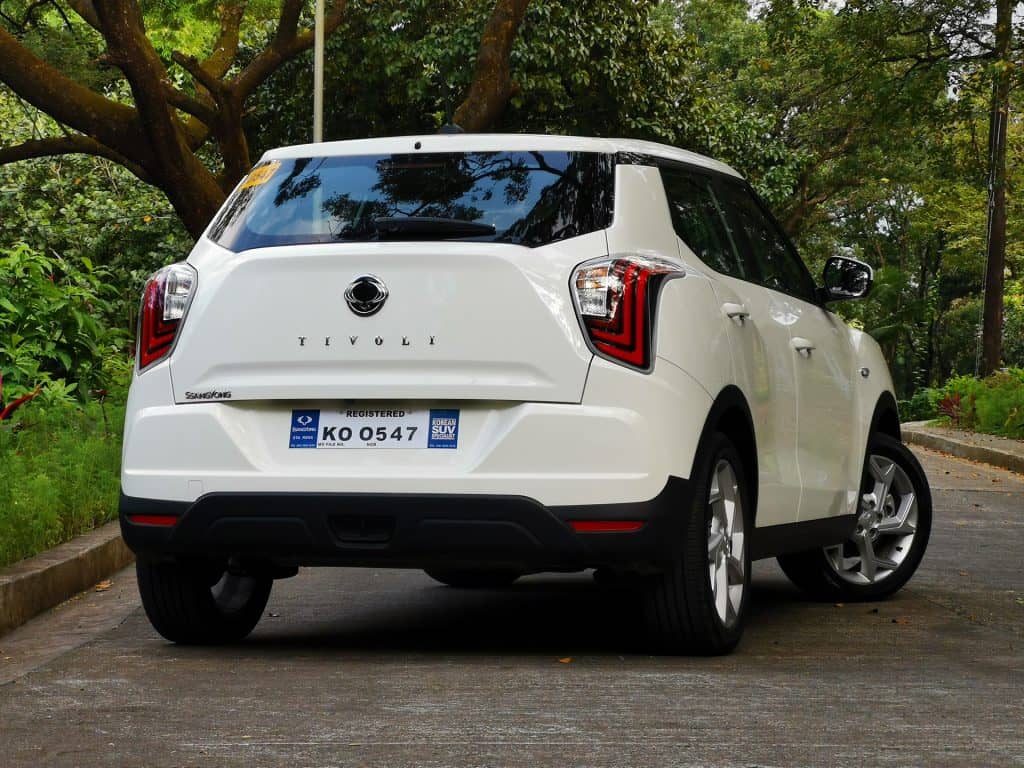
It’s at the rear where I had to step back a bit. The protrusion at the tailgate just doesn’t look good for me. It looked like they intended to have the rear wheel on there, like a true off-road vehicle, but changed their mind in the end and found it too late to make revisions on the body panels.
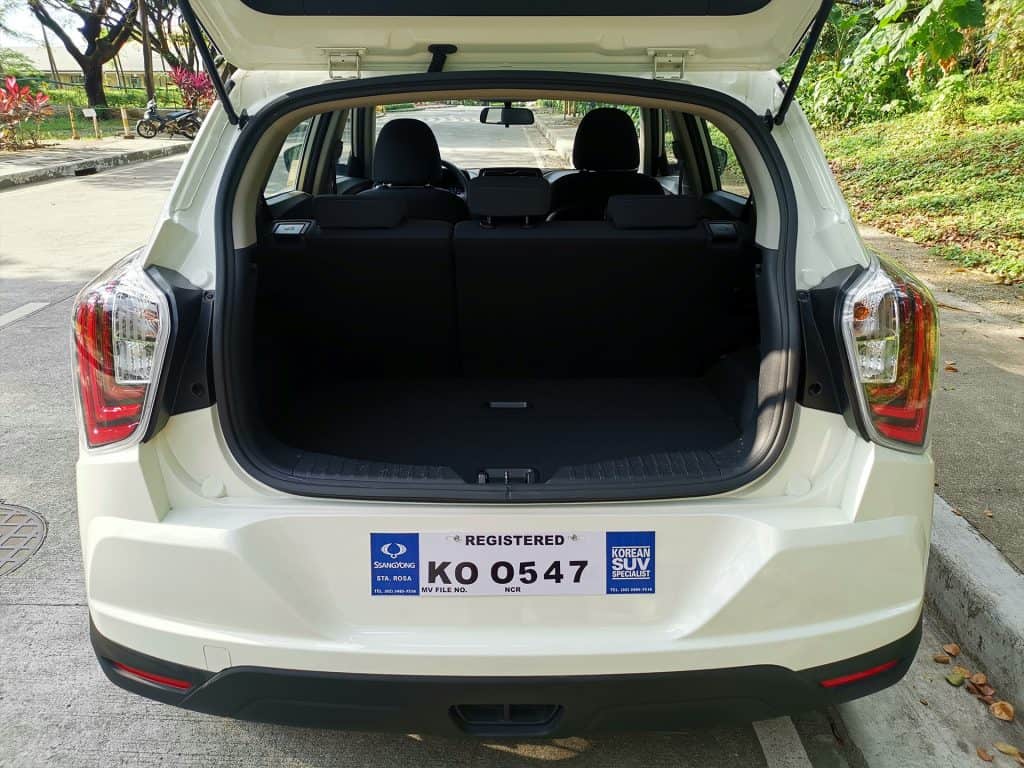
Open up the rear door and you’d be surprised again. I don’t have the measurement for every cargo area entrance but this one seemed to be a bit higher than other crossovers. Still, there’s space for normal things like luggages, trolleys, and golf bags. The rear seats also fold flat in a 60-40 configuration so versatility is assured.
Generous space
Now for the question – does it have a great legroom like my friend said? Weird but yes, it certainly does. I say weird because even though SsangYong claims that the Tivoli has the longest wheelbase in its class at 2,600mm, it’s not true anymore. The current Honda HR-V, Hyundai Kona, and MG ZS also have 2,600mm wheelbases but they certainly feel tighter. The Geely Coolray has the same spec but it feels more spacious than the previous three, and yet not as spacious as this Tivoli. I don’t even have to push the seat at the backmost setting in order to cross my legs on the front passenger seat. At 5’6 with thick thighs, I’m certainly impressed with the legroom of this crossover.
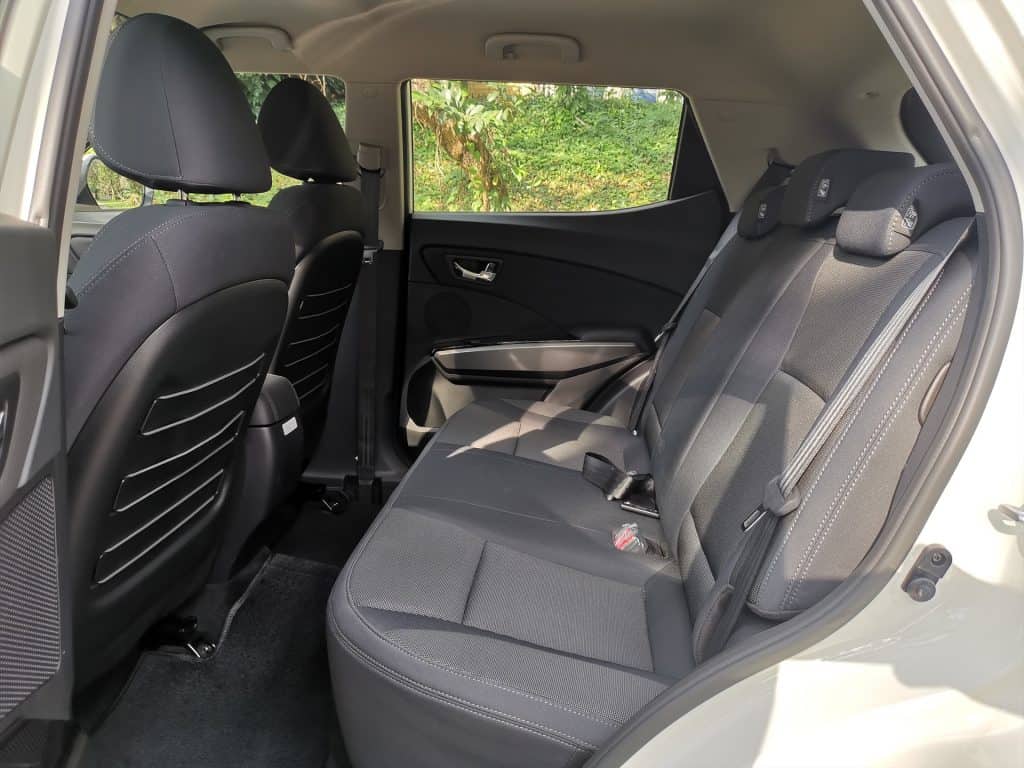
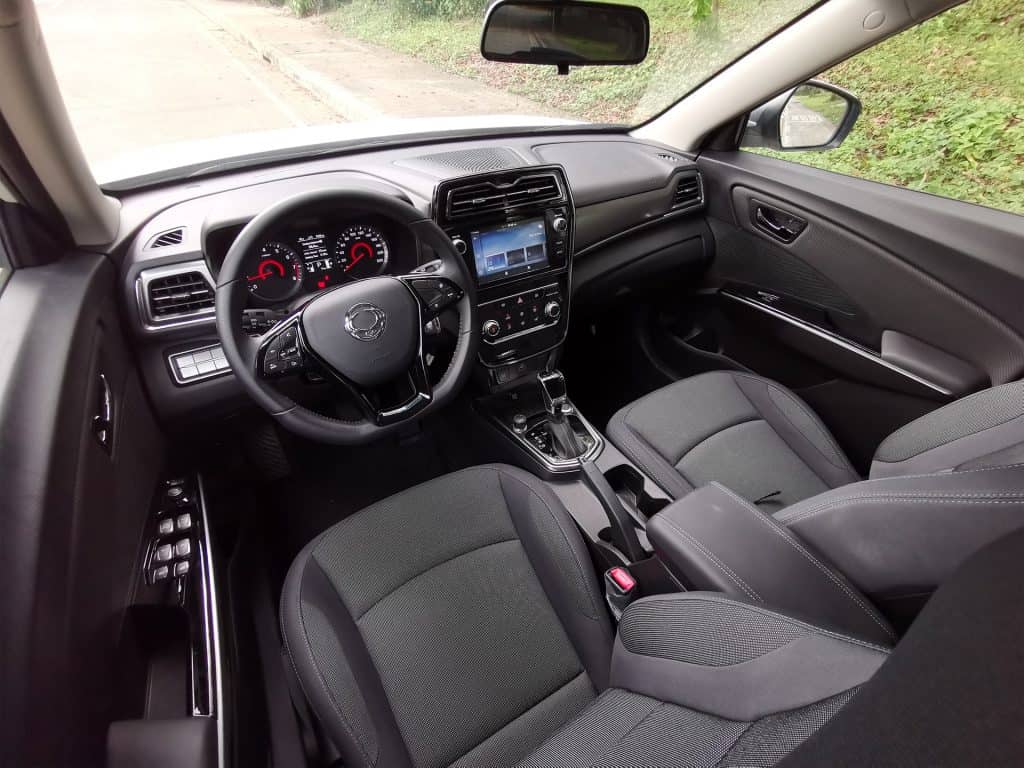
Here in front, things are very modest. This huge geometric thing at the center of the dash is a definite eye-catcher but aside from that, there’s nothing else that pulls your attention, and it’s a good thing. The sole focus is on the 8-inch touchscreen with Apple CarPlay and Android Auto, and the A/C controls. The carbon-fiber design on the panels are a subtle nod to sportiness, while the small bumps on the steering wheel guide your hands to the perfect hand placement on it.
SsangYong has to make the buttons on the dash more tactile, though. It’s still soft to the touch and is prone to being pushed when making tight maneuvers like 3-point turns. Either that or they’ll have to make the buttons smaller so they sit farther away from the hands when it’s on 9 and 3.
Out on the road
Once you start the Tivoli, it will remind you of the bygone era of ringtones. There’s a tone when you turn it on and off, when the doors lock and unlock, and the turn signals are very loud for such a modest tone. Luckily, you can adjust those settings on the system menu including showing the welcome and leaving greeting, when the door locks and unlocks, and the color of the accent on the gauges for both day and night. It’s a small thing but it gives the Tivoli a lot more personality and lets you be you, instead of the driver adjusting to the car.
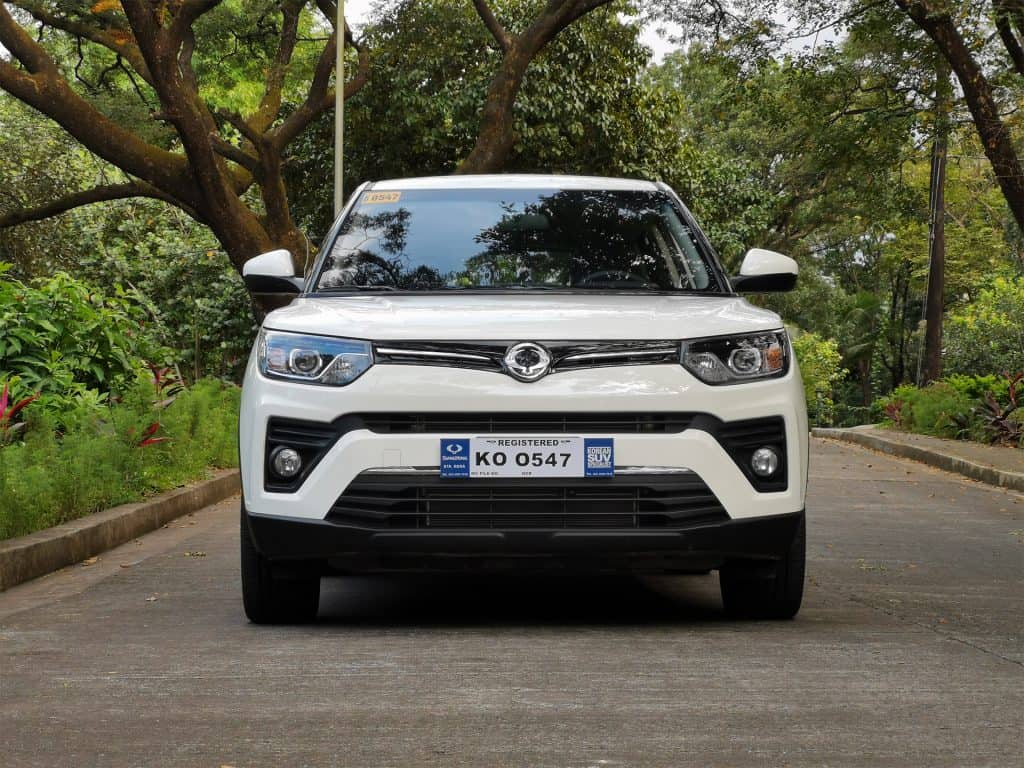
On the road, the engine is very peppy for its size. The 1.6L gas engine certainly makes use of every horse in its 126hp stable and 160Nm of torque in order to remove any sluggish feel when you’re on the throttle. It’s not the fastest nor most responsive, but definitely far from being dull. It’s just unfortunate that there’s not much they can do with the 6-speed transmission that has three driving modes – Normal, Sport, and Winter—one of which could’ve been Eco instead.
But it doesn’t really need an Eco mode anyway. The Tivoli is a modest drinker even in traffic, reaching 7.8 km/l and up to 13 km/l on Sunday, if you don’t go to congested roads that usually lead to a mall. Take note that those figures are for the normal mode.
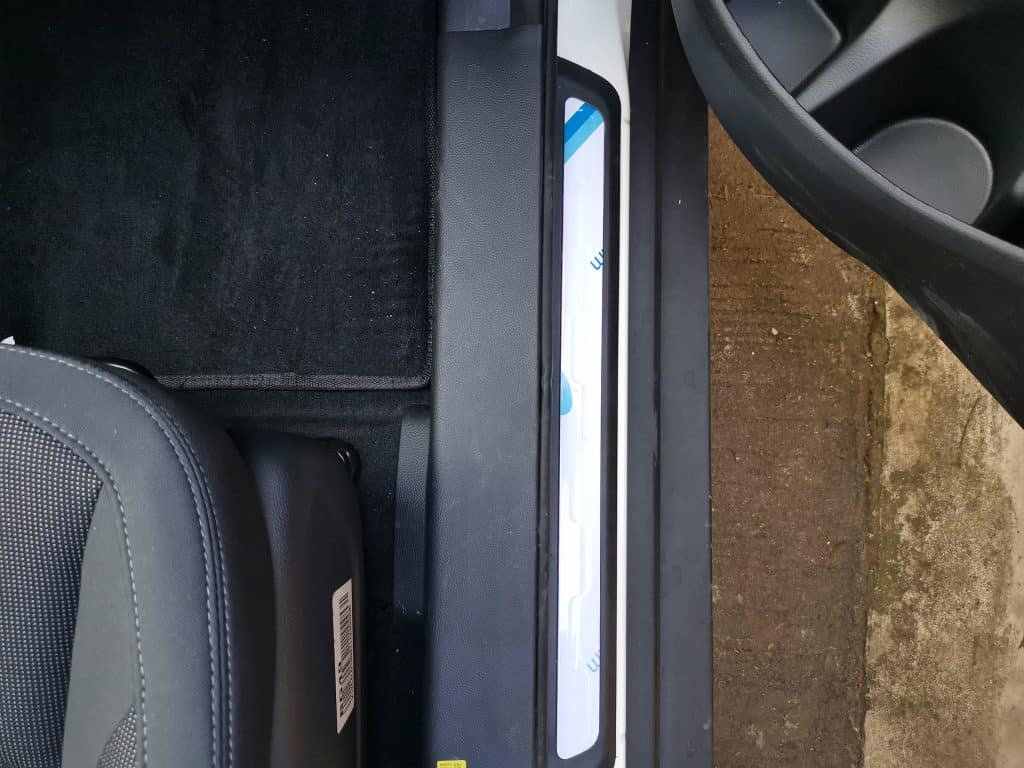
Leaving the Tivoli takes a bit of technique because the cladding under the doors are a bit thick so they end up always touching your leg whenever you go out. I’m not sure about you, but I don’t like that feeling so I have to readjust myself on the seat, nearer to the exit, so that I won’t touch it when I step off of the vehicle.
The lowdown
Aside from these, the Tivoli comes with rain sensing wipers, dual airbags, ABS with EBD, keyless entry system, burglar alarm, and a rear camera. All for P1,120,000. At that price, with those features, it’s certainly more enticing than the Diesel Sport variant which is P60k higher.
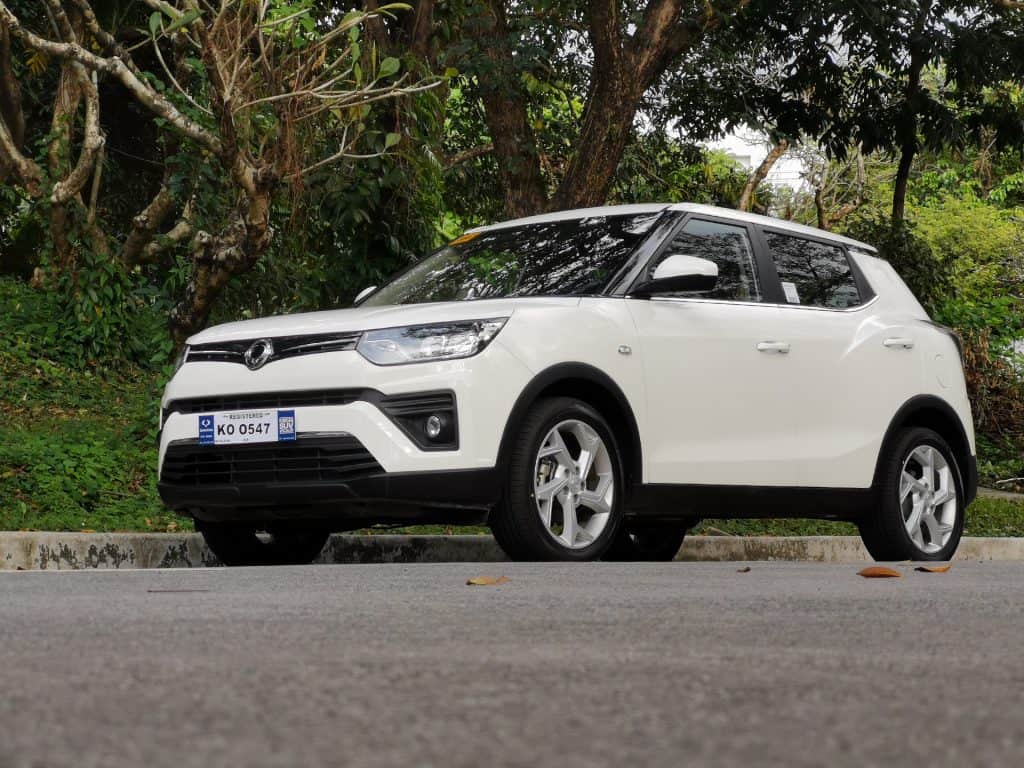
It’s a different story when you pit it against the competition. The Tivoli Gas would’ve been fine because its price range sits at the lower end of its category. However, because of the MG ZS which is under a million and with more safety features, the Tivoli stands on shaky ground, but that’s on paper.
The SsangYong Tivoli Gas’s story depends on what you’re looking for. If you’re very conscious about safety and want all those bells and whistles, then the Tivoli might not be your cup of tea. But if you’re looking for a good drive, fuel efficiency, and really generous space inside, the Tivoli is worthy of your attention.

